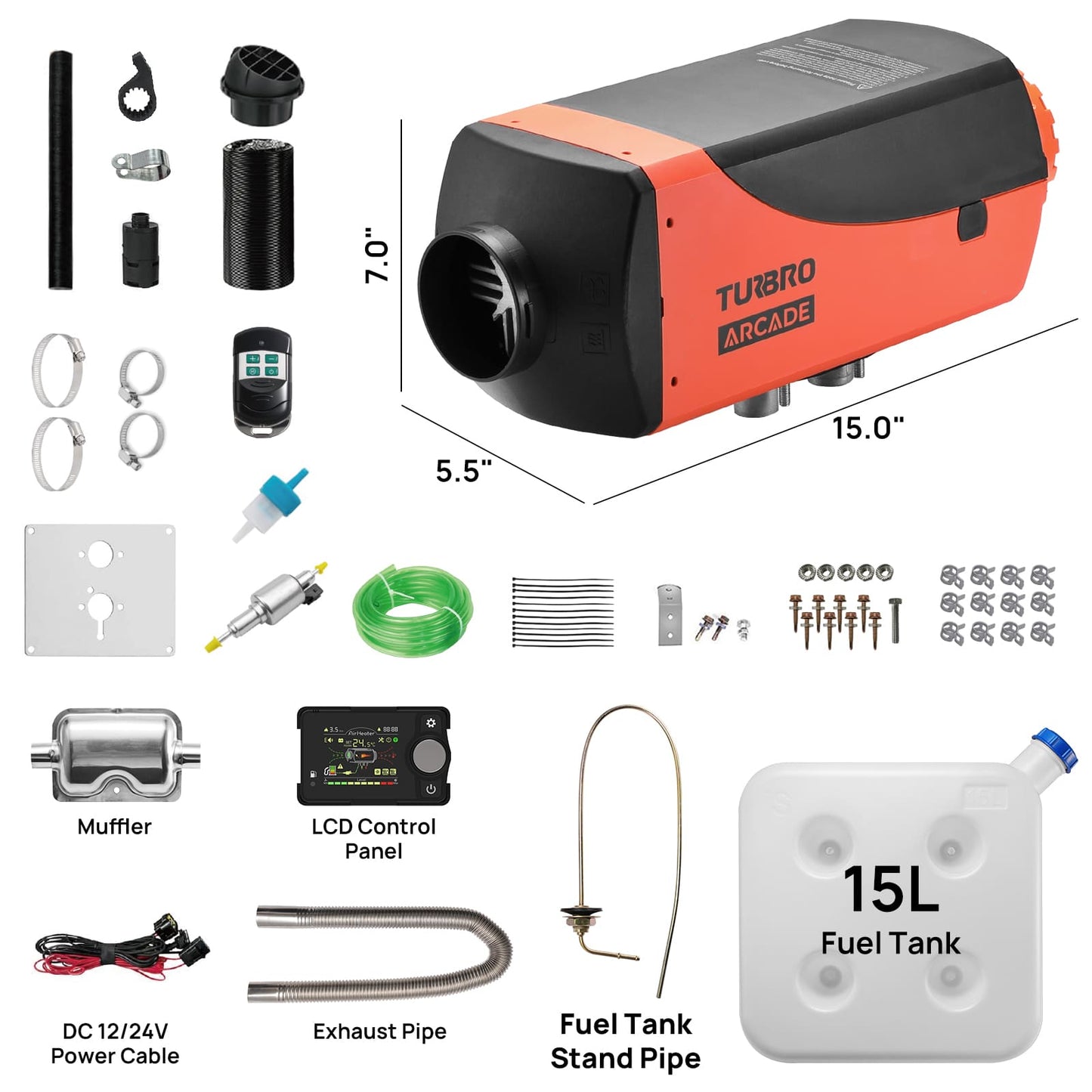





FAQ
No! Please use diesel only, and high-quality diesel is advised. When transferring fuel from another container, avoid pouring any sediment from the bottom. Regularly check and clean any accumulated residue in the fuel tank.
It’s not recommended to use an extension cord for DC power. If necessary, use a wire rated at 18 AWG (1.024 mm diameter, approx. 0.823 mm² cross-section) or thicker, and ensure all connections are secure. Although the rated current is 3A, the startup current can reach 10–12A.
Yes. However, the exhaust must be directed outdoors to prevent deadly carbon monoxide buildup. Never run the heater in an enclosed space without proper ventilation, as the exhaust contains harmful gases.
No. These outlets often supply enough voltage but insufficient current, which can prevent ignition. The starting current can be as high as 12A.
The heater requires 130 watts at 12 or 24 volts during start-up. The main power connection has to be made at a circuit designed to sustain this load without a voltage drop. Vehicle lighter sockets and auxiliary power outputs for C.B. radios and other electronic accessories are not considered adequate power supplies for the heater.
Yes, if it provides a stable 12V/24V DC output and can deliver at least 12A of current. We recommend using high-quality, well-known brands to avoid startup failure due to inaccurate ratings or control board damage due to unstable current.
Yes, but modifications (such as drilling a hole) must be done. A 13-foot fuel hose is included for connecting the unit to the tank. Please verify this length meets your needs before purchase. When drilling into the tank, avoid making the hole too large, as it may break the seal and prevent proper fuel pumping, leading to startup failure.
No. To prevent operational errors and ensure a stable connection, each remote is uniquely paired with a single heater (specifically the one included in the same package). Similarly, one phone can only connect to and control one unit at a time.
The Bluetooth app control range is up to 98 ft (30 m), while the remote control operates at a longer range of up to 164 ft (50 m).
This is normal. During initial startup, the combustion chamber temperature is low, which may cause incomplete fuel combustion. These effects will disappear as the system continues running and the temperature rises.
An angled installation facilitates the release of air from the fuel, preventing airlocks that could disrupt pump operation. It is recommended to tilt the pump at a 15-20 degree angle (with the end closer to the heater facing up). This helps to reduce the risk.
This may be caused by an air leak at a connection point. Check all connections for tightness and reseal if necessary to ensure system integrity.
To maintain smooth airflow, avoid bending the pipes whenever possible, especially into sharp S- or Z-shaped curves. Restricting airflow can lead to carbon buildup, which directly reduces heating efficiency. If carbon accumulates, internal cleaning will be required.
The room temperature shown on the LCD controller reflects the temperature detected by the controller's internal sensor, which may differ from your perceived temperature. The controller also features a temperature calibration function. Enter the basic settings interface and adjust it as needed.
This is normal. After a shutdown or a fault code appears, the fan continues running to expel exhaust and dissipate heat. DO NOT disconnect the power during this time, as it may cause overheating and damage internal components. Additionally, exhaust gases (manifesting as white smoke) may be expelled through the intake pipe, potentially burning the hose. Always wait until the fan has finished cooling (as indicated by the sound ceasing entirely) before disconnecting the power supply!
We continuously optimize the app to improve user experience. If you have questions about its operation, please feel free to contact our support team.
If the heater won’t be used for an extended period, drain all fuel from the tank and run the unit until the fuel lines are empty before storage.





















